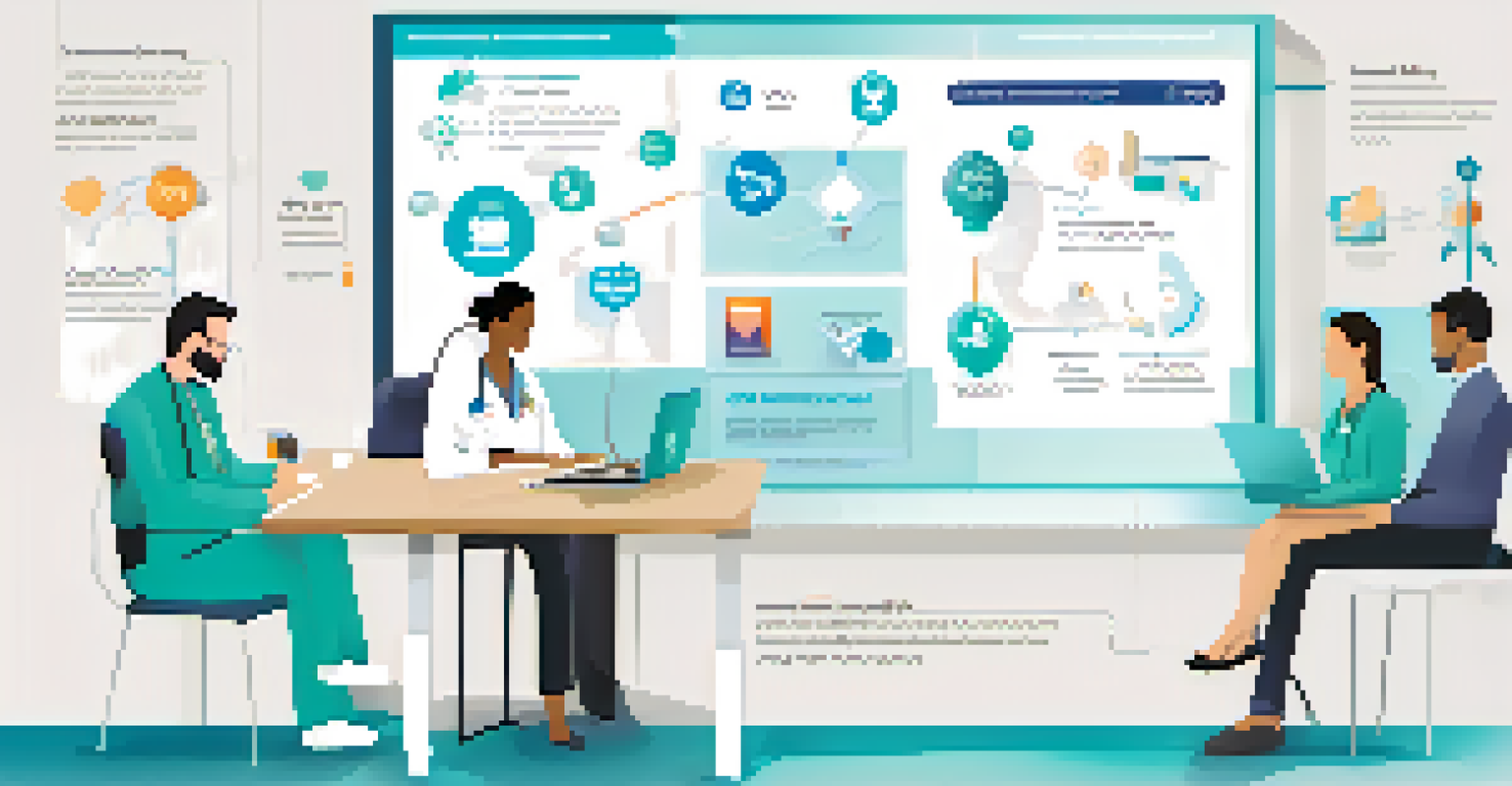Telemedicine and Health Informatics: A New Era in Healthcare

Understanding Telemedicine: A Game Changer for Patients
Telemedicine is revolutionizing the way we access healthcare services. Imagine being able to consult with a doctor from the comfort of your home, without the stress of commuting or long waits in a clinic. This convenience is especially beneficial for individuals in rural areas or those with mobility issues, making healthcare more accessible than ever.
Telemedicine is a tool that allows patients to be in charge of their own health care, rather than being dependent on someone else to manage it for them.
Through video calls, messaging, and even remote monitoring, telemedicine bridges the gap between patients and healthcare providers. It allows for timely consultations and follow-ups, which can lead to better health outcomes. For instance, a patient with a chronic condition can receive regular check-ins without the hassle of frequent office visits.
Furthermore, the COVID-19 pandemic accelerated the adoption of telemedicine, highlighting its importance in maintaining care continuity during challenging times. As we move forward, this approach is set to become a staple in healthcare, offering a blend of traditional and innovative care methods.
Health Informatics: The Backbone of Modern Healthcare
Health informatics involves the use of technology to manage and analyze health data. It encompasses everything from electronic health records (EHR) to data analytics and patient engagement tools. By centralizing patient information, health informatics enhances the efficiency of healthcare delivery and promotes better decision-making.

For example, healthcare providers can quickly access a patient's medical history, leading to more informed diagnoses and treatment plans. This not only saves time but also reduces the chances of errors that can occur when relying on paper records. In essence, health informatics transforms chaotic data into meaningful insights.
Telemedicine Enhances Accessibility
Telemedicine allows patients to consult healthcare providers from home, significantly improving access to care, especially for those in rural areas.
Moreover, the integration of informatics in telemedicine enhances patient care. It allows for seamless communication between providers and patients, ensuring that vital information is shared promptly. As technology continues to evolve, health informatics will play an even larger role in shaping personalized healthcare experiences.
The Benefits of Telemedicine for Healthcare Providers
Telemedicine offers numerous advantages for healthcare providers, streamlining operations and improving patient engagement. One significant benefit is the ability to increase patient capacity without the need for additional physical space. Doctors can see more patients in a day, enhancing productivity and revenue.
The future of health care is not just about the medicine; it's about how we use technology to engage patients in their own care.
Additionally, telemedicine reduces no-show rates. When patients can attend appointments from home, they're more likely to keep them. This not only improves patient outcomes but also helps providers maintain a steady workflow, ultimately benefiting the entire healthcare system.
Lastly, telemedicine allows for greater flexibility in scheduling. Providers can offer extended hours or weekend appointments, accommodating patients' busy lives. By embracing this model, healthcare providers can enhance their services while fostering stronger patient relationships.
Patient Empowerment Through Telemedicine
One of the most notable impacts of telemedicine is patient empowerment. With the ability to consult doctors remotely, patients feel more in control of their healthcare choices. This increased accessibility encourages individuals to seek care sooner, leading to early intervention and better health outcomes.
Additionally, telemedicine platforms often include educational resources and tools that help patients manage their health. For instance, patients can access information about their conditions, treatment options, and wellness strategies. This knowledge empowers them to take an active role in their health journey.
Health Informatics Boosts Efficiency
By centralizing health data, health informatics streamlines healthcare delivery and promotes better decision-making for providers.
Moreover, telemedicine fosters open communication between patients and providers. Patients can ask questions and express concerns more freely in a virtual setting, promoting a collaborative approach to care. This shift in dynamics strengthens the patient-provider relationship and enhances overall satisfaction.
Challenges Facing Telemedicine Adoption
Despite its many benefits, telemedicine faces several challenges that could hinder its widespread adoption. One major issue is the disparity in technology access among different populations. Not everyone has reliable internet or the necessary devices to engage in telehealth services, creating a digital divide.
Privacy and security concerns also pose significant barriers. Patients must trust that their sensitive health information is protected during virtual consultations. Healthcare providers need to implement robust security measures to safeguard data and ensure compliance with regulations like HIPAA.
Lastly, reimbursement policies for telemedicine services can vary widely, affecting providers' willingness to adopt this model. While some insurers cover telehealth visits, others do not, leading to confusion and potential financial losses for healthcare providers. Addressing these challenges is crucial for the future of telemedicine.
The Role of Technology in Enhancing Telemedicine
Technology plays a pivotal role in the success of telemedicine, with advancements continually shaping the landscape. High-quality video conferencing tools, secure messaging platforms, and mobile health applications are just a few examples of how technology enhances patient care. These innovations make remote consultations more effective and user-friendly.
Furthermore, wearable devices and remote monitoring tools have transformed how patients manage their health. These gadgets can track vital signs and send real-time data to healthcare providers, allowing for proactive interventions. For instance, a patient with heart issues can be monitored continuously, reducing the risk of serious complications.
Challenges Hinder Telemedicine Growth
Despite its benefits, telemedicine faces challenges like technology access disparities and privacy concerns that could slow its adoption.
As technology continues to evolve, we can expect even more sophisticated solutions to emerge. From artificial intelligence-driven diagnostics to virtual reality for therapy, the possibilities are endless. Embracing these advancements will be key to realizing the full potential of telemedicine.
The Future of Telemedicine and Health Informatics
Looking ahead, the future of telemedicine and health informatics is promising, with potential for even greater integration into healthcare systems. As technology becomes more advanced and accessible, we can expect a more seamless blend of in-person and virtual care. This hybrid approach could maximize convenience and effectiveness for patients.
Moreover, the rise of personalized medicine, powered by health informatics, will lead to tailored treatment plans based on an individual's unique data. This shift will enhance patient outcomes and satisfaction, as care becomes more closely aligned with each person's needs and preferences.

Ultimately, the collaboration between telemedicine and health informatics will redefine healthcare delivery. By embracing these innovations, we can create a more efficient, patient-centered healthcare system that prioritizes accessibility and quality. The journey has just begun, and the potential is truly exciting.